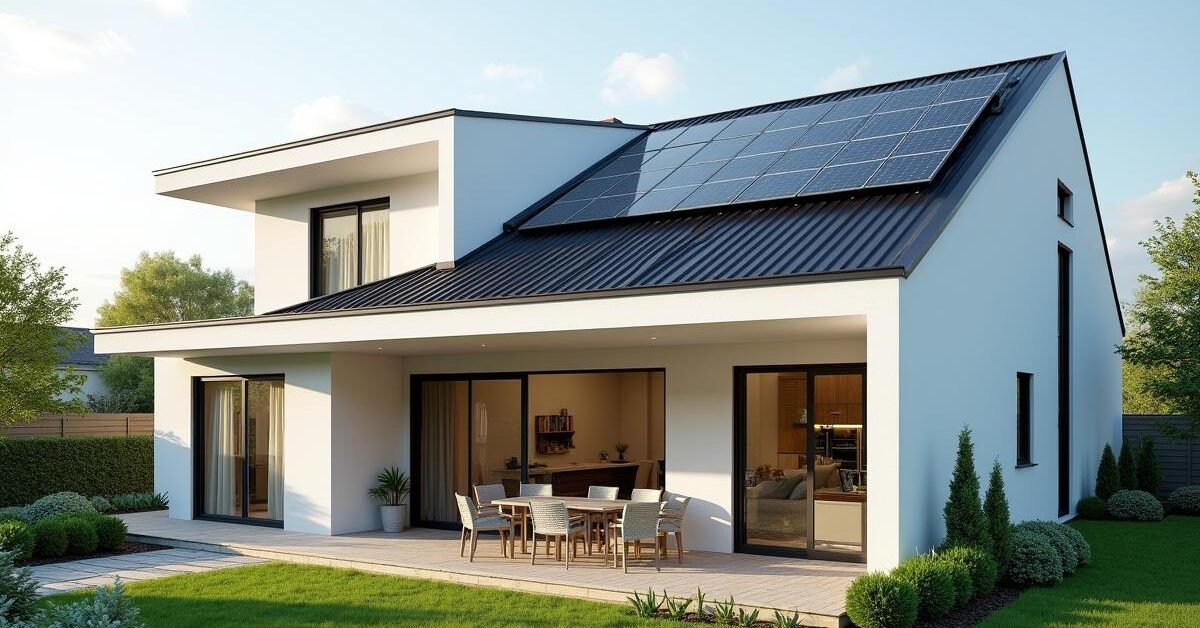Many first-time buyers and seasoned homeowners value the energy efficiency of new homes. The growing concern over rising utility bills, coupled with a global push for reduced carbon emissions, means construction standards have evolved drastically. People are now seeking residences that are not only comfortable to live in but also supportive of a greener planet. In today’s market, modern building codes encourage the integration of advanced technologies, giving newly built properties a distinct edge.
Builders are responding to this demand by adopting innovative techniques and materials that go far beyond traditional methods. Whether it’s through high-performance insulation, tighter building envelopes, or state-of-the-art windows, the result is a space that consumes less energy and remains more comfortable year-round. For those exploring new housing options, these upgraded standards blend comfort, cost savings, and an environmentally friendly lifestyle.
Contents
The Role of High-Performance Insulation
Home insulation is more than just a layer of material placed within walls. It forms a protective barrier that helps regulate indoor temperatures, limiting the escape of heat in winter and keeping interiors cooler during summer. In newer properties, builders often use materials like spray foam and dense fiberglass for enhanced coverage, reducing air gaps that older homes sometimes overlook.
Well-insulated houses maintain consistent temperatures with less reliance on heating or cooling systems. This means lower monthly bills for homeowners, which is a primary appeal of energy efficiency upgrades. It’s also a big step towards green building significance, since effective insulation contributes greatly to a smaller carbon footprint.
Tighter Building Envelopes
Another crucial factor in maintaining comfortable indoor conditions is the building envelope. In modern construction, every gap or seam can be sealed more effectively than ever before. By applying advanced caulking, high-quality weatherstripping, and robust vapor barriers, new developments ensure that unwanted drafts stay out, while desired temperatures remain constant inside. This careful attention reduces energy loss and complements the insulation, ultimately lowering household emissions.
Advanced Windows and Sealing
Windows play a considerable role in how much energy a home consumes. Traditional single-pane windows let indoor heat escape easily, while also allowing excessive warmth to seep through during hot months. New builds often feature double- or triple-pane glass with low-emissivity coatings, significantly reducing temperature transfer. These advanced windows can filter out harmful UV rays while retaining the right amount of natural light.
Modern sealing techniques also go hand in hand with these windows. Smart flashing systems around frames block water intrusion, and efficient weatherstripping prevents air leaks. The combination helps reduce condensation, drafts, and thermal bridging, keeping the indoor environment regulated. It’s another example of how small details in new construction add up to meaningful energy savings.
Modern Construction Techniques for Energy Savings
Alongside better insulation and windows, builders employ modern construction techniques to support energy saving strategies. These might include optimizing a home’s orientation to maximize daylight use and minimize heat gain. By choosing eco-friendly materials with low thermal conductivity, architects and engineers can reduce the amount of energy required for heating or cooling.
Additionally, many new homes incorporate advanced ventilation systems that maintain fresh indoor air without wasting energy. This controlled circulation regulates humidity and eliminates stale air, creating a healthier living space. When combined with other innovations, such as insulated concrete forms or structural insulated panels, the efficiency of a modern home reaches impressive levels.
Embracing Renewable Energy Possibilities
With the rise of solar panels and geothermal systems, many new properties can incorporate on-site renewable energy. These installations cut dependence on the grid and often generate surplus power, which can offset costs over time. Embracing renewable options aligns perfectly with a more sustainable future, offering homeowners both independence and peace of mind.
Smart Appliances and Technology Advancements
Technology has made it easier than ever to streamline daily activities and curb unnecessary energy use. Smart thermostats, for example, learn your temperature preferences and automatically adjust heating and cooling based on real-time conditions. This minimizes wasteful operation and tailors energy consumption to your routine. Many new builds are also pre-wired to accommodate home automation, allowing individuals to manage everything from lighting to security with a tap on their smartphone.
Energy-efficient appliances go beyond washers and refrigerators. Modern LED lighting cuts down on electricity bills while providing bright, high-quality illumination. When homeowners combine smart systems with these efficient products, the environmental impact decreases, and monthly expenses become more predictable. Such synergy between technology and design truly sets new constructions apart.
Integrating Home Automation Systems
Many new builds now include wiring and design frameworks that make it easy to integrate home automation systems. From motion-sensing lighting to enhanced security features, these systems ensure electricity and resources are used only when necessary. With support from home lighting, audio, and automation integration experts, homeowners can also collect and analyze data on household usage patterns, allowing them to fine-tune performance, reduce energy bills, and minimize environmental impact over time.
Practical Long-Term Advantages for Homeowners
Choosing a property built with the latest sustainable standards provides valuable peace of mind. With lower utility bills, homeowners can direct their resources toward other priorities. Over time, the investment in a property built for efficiency often pays off, especially as energy costs fluctuate and environmental awareness grows.
There’s also an appealing resale potential for houses crafted with eco-friendly methods. Buyers looking for green features are increasingly willing to pay a premium when seeking comfortable, long-lasting homes. By incorporating water conservation systems, high-efficiency HVAC equipment, and a tight building envelope, these modern properties promise both immediate satisfaction and enduring value.

